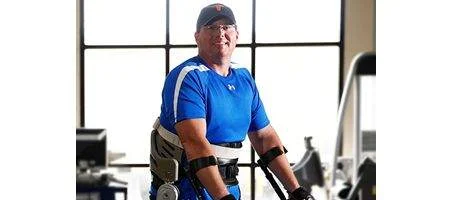Vanderbilt engineers have developed an exoskeleton for people paralyzed below the waist that they say is more compact and cheaper than existing versions.

Likely to hit the market as soon as next year, the exoskeleton automatically adjusts the amount of robotic assistance it gives to users who have some muscle control in their legs.
It’s the only wearable robot that incorporates a proven rehabilitation technology called functional electrical stimulation, which applies small electrical pulses to paralyzed muscles, causing them to contract and relax.
FES can improve strength in the legs of people with incomplete paraplegia, while for complete paraplegics itcan improve circulation, change bone density and reduce muscle atrophy.
“You can think of our exoskeleton as a Segway with legs,” says professor Michael Goldfarb. “If the person wearing it leans forward, he moves forward. If he leans back and holds that position for a few seconds, he sits down. When he is sitting down, if he leans forward and holds that position for a few seconds, then he stands up.”
The Vanderbilt exoskeleton weighs about 27 pounds, nearly half the weight of other models, and allows users to fit into a standard-sized wheelchair.
“My kids have started calling me ‘Ironman’,” says Brian Shaffer, who was completely paralyzed from the waist down in an automobile accident on Christmas night 2010.
“It’s unbelievable to stand up again. It takes concentration to use it at first but, once you catch on, it’s not that hard: The device does all the work. I don’t expect that it will completely replace the wheelchair, but there are some situations, like walking your daughter down the aisle at her wedding or sitting in the bleachers watching your son play football, where it will be priceless.”






